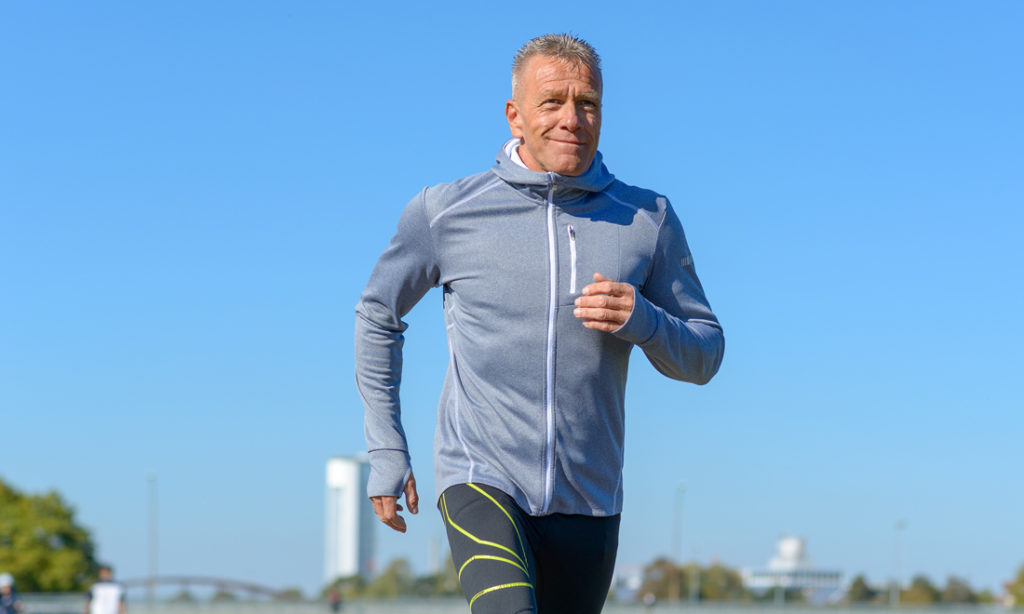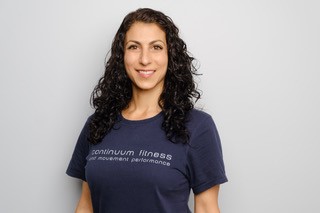Return to Running Post-Injury

Many of our clients who love to run feel frustrated when they can’t. They love the convenience, low cost, and high reward running gives them. Our clients sometimes get injured and need to hit the pause on running. Many clients are in that limbo of finishing rehab but not ready for their usual running routine. They have tried running 5 km and it is just not working. They are in pain, feel frustrated, and are not sure how to bridge that gap and return to their running plan. As fitness professionals, we play a key role in helping our clients return to doing what they love! Here are five tips to help ease your clients back to running safely and effectively.
1. Identify potential weak links.
If you can perform manual muscle tests, look at the key hip, core, and knee stabilizers. Test gluteus medius, gluteus maximus, transverse abdominus, multifudus, vastus medialus, rectus femoris, and hamstring function. Use movement screens to identify areas in need of improvement. Look at single leg stability, thoracic rotation, hip extension (without lumbar extension), foot intrinsic muscles, great toe mobility, ankle mobility, and core stabilizing strategies. Release overworking areas and engage underworking areas with low load before integrating into more complex programming.
2. Decide on small, progressive weekly increases in time/volume/intensity/ load and have a plan for flare-ups.
Establish a baseline and work on small progressions clearly outlined. Is it an increase of 10 per cent of running volume weekly? Stick to the progressions if your client is asymptomatic. Your client will be tempted to go back to what they did before their injury but stress the importance of adapting to the progressive plan. The body needs time to adapt to the new demands.
Have a backup plan for when things get uncomfortable. If running at a 6:30/km pace causes symptoms, can they switch to a 7:00/km pace? What about form adaptations or walking breaks? Try optimizing alignment, adding breathing strategies, and shorter stride length to potentially reduce symptoms. Give your clients permission to regress in order to progress.
3. Restore with movement and therapy, and program purposefully.
If you have identified weak links, work your programming around restoring function and improving mechanics. Runners need ample single leg stability work including strength, endurance, and propulsion work. Start with good single leg stability before adding dynamic progressions. Include mobility work in movement preparation drills and sneak in corrective exercise into warmups. If helpful, encourage your client to continue seeing their manual therapist in conjunction with training to help optimize recovery.
4. Assess gait mechanics.
Have a peek at how your client is walking AND running. Is there something that can be easily corrected? Are the basics present: good thoracic rotation, toe push off and hip extension? Most importantly are they landing with their center of mass over the base of support (COM over BOS)? We often find athletes over stride – this can lead to altered mechanics, back discomfort, and excessive heel striking over mid foot striking. Work towards a cadence of 180 strides per minute (if your client is currently lower, aim to increase slowly). Many feel they need to take longer strides to go faster, however this may alter mechanics and cause more symptoms. Start with shorter, quicker steps first with good cylinder control.
5. Know when to refer out and get help.
If your client is hitting a plateau, if symptoms are worsening, or if you find you are overwhelmed and unsure of what to do, refer out. It is difficult to send a client away in the short term, but they often return and are grateful for you putting them first and respecting your scope. Connect with your client’s health care practitioner, with your client’s consent, and share your findings and objectives. Connecting and collaborating as a team can give you valuable insights from both perspectives (and may also lead to more referrals!).
Conclusion
Helping your clients get back to doing what they love is challenging yet rewarding. When we take a step back to look at the big picture and help guide our clients with small, purposeful steps, we can help them return to their activities with less pain and greater function. Helping runners enjoy running again, pain free, can be a life changing experience for many. Let us help our clients return to activities they love with purpose and passion.

